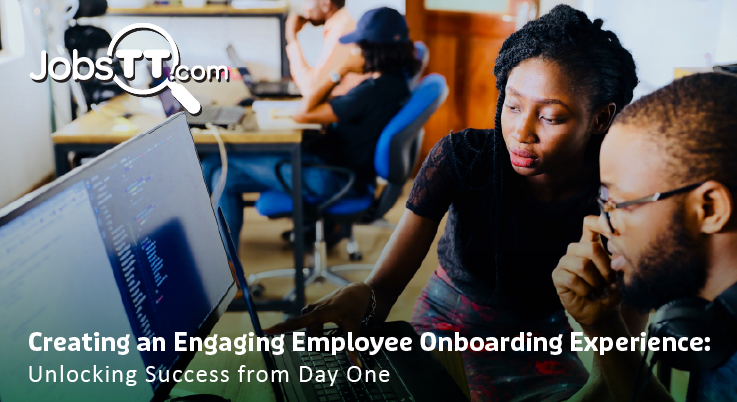Creating an Engaging Employee Onboarding Experience
The first few days of a new job are crucial for setting the tone of an employee’s journey within a company. A well-designed and engaging onboarding experience can make a significant difference in how quickly new hires become productive, integrated, and satisfied in their roles. In this blog post, we will explore the key strategies and best practices to create an engaging employee onboarding experience that fosters a sense of belonging, boosts retention rates, and ultimately drives organizational success. From understanding the importance of onboarding to leveraging technology and personalization, we will delve into actionable steps that will help your company build a memorable onboarding program.
The Importance of Employee Onboarding
- Setting Expectations: Employee onboarding is an essential process that helps new hires understand their roles, responsibilities, and performance expectations right from the start along with giving the employee a realistic expectation of the culture of the organization. It sets a clear path for them to follow and provides them with the information they need to succeed in their roles. Direct communication of the employees’ expectations during onboarding is also known to improve performance.
- Integration and Socialization: A well-structured onboarding process facilitates the integration of new employees into the company culture. It’s an initial team-building exercise, fostering connections with colleagues and promoting collaboration. This leads to new employees understanding not only the company culture but also how they fit into their team.
- Accelerating Time-to-Productivity: Effective onboarding provides new hires with the tools, knowledge, and support necessary to become productive members of the team quickly. An expertly crafted onboarding program can shorten the time it takes for new recruits to become productive, which is a crucial metric used by HR experts to gauge the effectiveness of the onboarding process.
- Boosting Employee Engagement: Engaging onboarding experiences show new hires that the company values them. This leads to higher levels of job satisfaction and commitment. A good onboarding program has been shown to directly improve employee retention, especially since about a third of employee turnover happens during the first 90 days.
Designing an Engaging Onboarding Program
- Pre-Onboarding Preparation: The first step in designing an engaging onboarding program is to develop a comprehensive onboarding plan and timeline. Assigning a dedicated onboarding team or mentor can facilitate a more personalized and effective onboarding process. Preparing necessary documentation and resources in advance ensures that new hires have all the tools they need to get started.
- Welcome and Orientation: A warm and personalized welcome message sets a positive tone for new hires. Providing an overview of the company’s mission, vision, and values helps align new employees with the company’s ethos from day one. An office tour and introduction to key team members can also facilitate a sense of belonging and help new hires navigate their new workplace.
- Clear Role and Expectations: Clearly communicating the new employee’s role, responsibilities, and performance objectives is essential for setting expectations. A comprehensive job description and key performance indicators (KPIs) provide a clear roadmap for success. Setting realistic goals and providing guidance on how to achieve them further supports new hires in their roles.
- Training and Development: A well-structured training program tailored to the employee’s role accelerates their learning process. Providing access to relevant resources, tools, and systems equips new hires with the necessary knowledge and skills. Encouraging continuous learning through workshops, online courses, or mentorship can foster a culture of growth and development.
- Personalization and Connection: Assigning a buddy or mentor to guide new employees can help them feel more supported and connected. Facilitating networking opportunities and team-building activities promotes collaboration and strengthens team bonds. Providing opportunities for new hires to share their skills, experiences, and aspirations also enhances the sense of belonging and engagement.
- Ongoing Feedback and Evaluation: Regular check-ins can address concerns and provide ongoing support, establishing a feedback culture that encourages open communication. Performance evaluations offer an opportunity to acknowledge achievements, identify areas for improvement, and set development plans. Ultimately, an engaging onboarding program is a continual process that adapts to the needs of the employees and the organization.
Leveraging Technology for Onboarding Success
- Onboarding Software and Tools: Onboarding platforms can be used to streamline processes and ensure consistency in onboarding. These digital tools are effective in reducing manual paperwork and increasing efficiency, with all necessary information stored in a centralized database. Digital resources such as online FAQs via Notion and training modules via Loom, can be made readily available for new hires, providing 24/7 access to vital information.
- Gamification and Interactive Elements: Incorporating gamified elements into the onboarding process can enhance engagement and learning. This could include fun activities like live word clouds, polls, or photo sessions. Theme-based learning approaches such as interactive videos, gamified assessments, and quizzes not only deliver better learner interaction but also improve new hire integration and engagement.
- Virtual Onboarding: Adapting onboarding processes to suit remote or hybrid work environments is a key aspect of leveraging technology for onboarding success. This process, also known as digital or remote onboarding, uses online tools and software to facilitate the onboarding of new hires regardless of their location. Video conferencing, virtual tours, and collaboration tools can be used to create a virtual sense of community, allowing new hires to familiarize themselves with the company and its culture.
Measuring Success and Continuous Improvement
To guarantee the efficacy of your employee onboarding program and foster continuous improvement, implementing metrics and routinely assessing its success is vital. Here are some crucial steps to contemplate:
- Employee Feedback: Conducting surveys or feedback sessions to gather insights from new hires about their onboarding experience is a key step. This feedback can be used to identify areas of improvement and make the necessary adjustments.
- Performance Indicators: Monitoring key performance indicators (KPIs) related to employee retention, time-to-productivity, and satisfaction is crucial. By analysing this data, you can identify patterns, trends, and areas where onboarding can be enhanced.
- Manager and Team Feedback: It’s important to seek feedback from managers and team members involved in the onboarding process. Understanding their perspective on the effectiveness of the program and areas that need improvement can provide valuable insights for further refinement of the process.
- Continuous Iteration: Regular review and updates of your onboarding program based on feedback and evaluation results is necessary for continuous improvement. Staying informed about industry best practices and incorporating relevant improvements into your process can ensure your onboarding program remains effective and up-to-date.
Conclusion
Creating an engaging employee onboarding experience is a critical investment for any organization. By focusing on setting clear expectations, providing comprehensive training, fostering personalization and connection, leveraging technology, and continuously measuring success, you can design an onboarding program that sets your new hires up for success from day one.
Remember, an engaging onboarding experience not only helps new employees integrate seamlessly into the workplace culture, but it also contributes to higher levels of engagement, job satisfaction, and long-term retention.
Creating an environment of trust, transparency, and inclusivity is equally important as it makes new hires feel that they belong, thereby enhancing their commitment to the organization.
Proactive steps towards establishing meaningful relationships with your staff and embedding new hires into your company’s values and culture from the outset also go a long way in ensuring their engagement and commitment.
Embrace the power of effective onboarding to unlock the potential for growth and success within your organization. By doing so, you invest not only in the success of your new hires but also in the long-term success of your organization.




